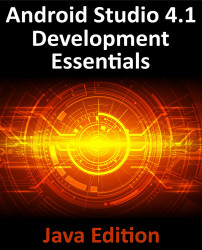In general, the Android Studio editor will automatically format code in terms of indenting, spacing and nesting of statements and code blocks as they are added. In situations where lines of code need to be reformatted (a common occurrence, for example, when cutting and pasting sample code from a web site), the editor provides a source code reformatting feature which, when selected, will automatically reformat code to match the prevailing code style.
To reformat source code, press the Ctrl-Alt-L (Cmd-Opt-L on macOS) keyboard shortcut sequence. To display the Reformat Code dialog (Figure 8-19) use the Ctrl-Alt-Shift-L (Cmd-Opt-Shift-L on macOS). This dialog provides the option to reformat only the currently selected code, the entire source file currently active in the editor or only code that has changed as the result of a source code control update.
The full range of code style preferences can be changed from within the project settings...




